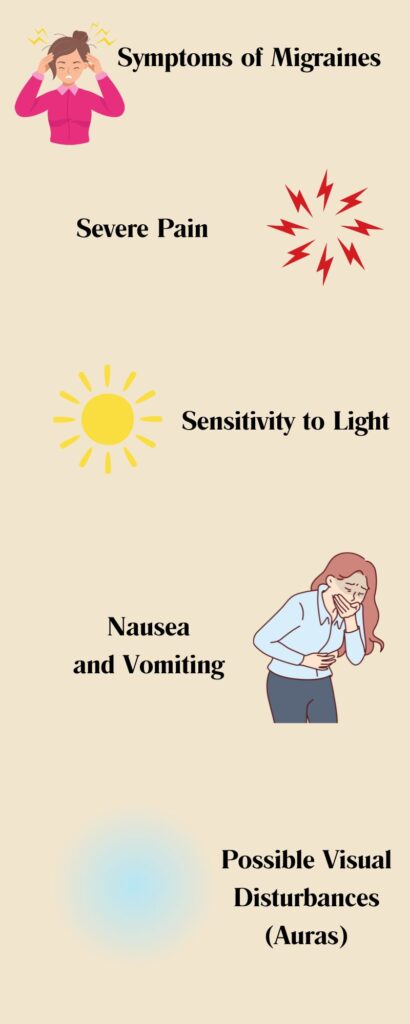Mastering Your VA Disability Claim for Migraines
When it comes to filing a VA disability claim for migraines, veterans may feel like they’re entering a labyrinth with no clear exits. The process is riddled with complexities that often make it difficult for individuals without a roadmap. However, once you grasp the essentials of what the VA looks for in claims, especially those concerning migraines, it is just like filing any other claim.
The first step in this journey is to understand that evidence is king in the eyes of the VA. Your task is to convincingly demonstrate that your migraines are a direct result or significant aggravation due to your military service. This is often easier said than done, but with the proper preparation and documentation, it’s entirely achievable. Witness statements, service records, and medical records play critical roles in building your case.

For veterans experiencing migraines, the stakes are high. These debilitating headaches can severely impact one’s quality of life, making it very important to secure the benefits and support, especially if you are dealing with frequent and severe migraines. With this in mind, it’s crucial to approach the claims process with patience, persistence, and a well-thought-out plan.
Understanding the VA Disability Claim Process for Migraines
First and foremost, it’s essential to comprehend that the VA assesses claims based on evidence. You’ve got to show, not just tell, that your migraines were either initiated or aggravated by your military service. This involves collecting service records, medical documentation, and if necessary, witness statements that paint a vivid picture of your condition.
If you have several instances of documented headaches while in service it will help your case immensely. The history of headaches, especially if they are diagnosed as migraines, will make winning your claim relatively painless. If you were not diagnosed in service, it can be a little more difficult. Remember that even if you were not diagnosed with migraines in service, you will still need to be diagnosed with them before filing a claim. So that will be your first step, getting diagnosed with migraines.
Documenting the frequency and impact of your migraines on your daily life is a critical piece of the puzzle. You can use Tools like the Migraine Buddy app to track the severity, frequency, and triggers of your migraines. It’s best to be proactive and start to track them immediately so, if you are going to file a claim, you will have some evidence and be able to explain to the doctor as well as the VA how often you are having the migraines and how severe they are.
To shore up your claim, meticulous documentation of your medical history, including any exposure to loud noises during service, along with a compelling personal statement, can make a significant difference. Ultimately, winning a VA disability claim for migraines hinges on detailed documentation, persistence, and obtaining the right medical evidence to make your case indisputable.
It is also helpful to familiarize yourself with the language the VA uses in it’s rating scheme. Below is the rating scheme for migraine headaches.
- With very frequent completely prostrating and prolonged attacks productive of severe economic inadaptability 50%
- With characteristic prostrating attacks occurring on an average once a month over last several months 30%
- With characteristic prostrating attacks averaging one in 2 months over last several months 10%
- With less frequent attacks 0
If you were not diagnosed in service but you were experiencing migraines, buddy statements can be helpful. Remember any time when you may have mentioned your headaches and how bad they were, and reach out to friends from service who were with you. They can provide letters stating when and where they observed you dealing with headaches.
If you are requesting these buddy letters, make sure they are complete with time each person was with you, unit assigned to, and enough other details to show they were with you and would have witnessed your headache symptoms.
Navigating Challenges and Seeking Support
Veterans frequently voice frustrations over delays and the complex labyrinth that is the claims process. The key is not to lose heart. Recognizing the importance of community support is your first step. Connecting with fellow veterans who’ve walked this path can provide invaluable insights and moral support. These individuals often share their experiences on forums and social media platforms, offering a treasure trove of practical advice.
Veterans Service Officers (VSOs), other Veteran Service Organizations, the VFW and American Legion, and the Disabled American Veterans (DAV), can help when it comes time to file. These groups are well-equipped to help veterans understand the nuances of their claims, help them file the claim, and guide them through the appeal process, if necessary.
Beware of predatory companies targeting veterans for financial gain. The complexity of the benefits process creates an environment ripe for exploitation. It’s vital to stay informed and protect yourself from these unscrupulous actors by relying on trusted and verified sources of assistance.
Hopefully this information can help you if you are filing for compensation for migraines. We always advise seeking the assistance of a local VSO when filing a claim. They are well versed in dealing with the VA Benefits Administration and will be your best source of help. And remember, you can always drop a question or comment here in the comments, or email us at info@nwavet.org.







